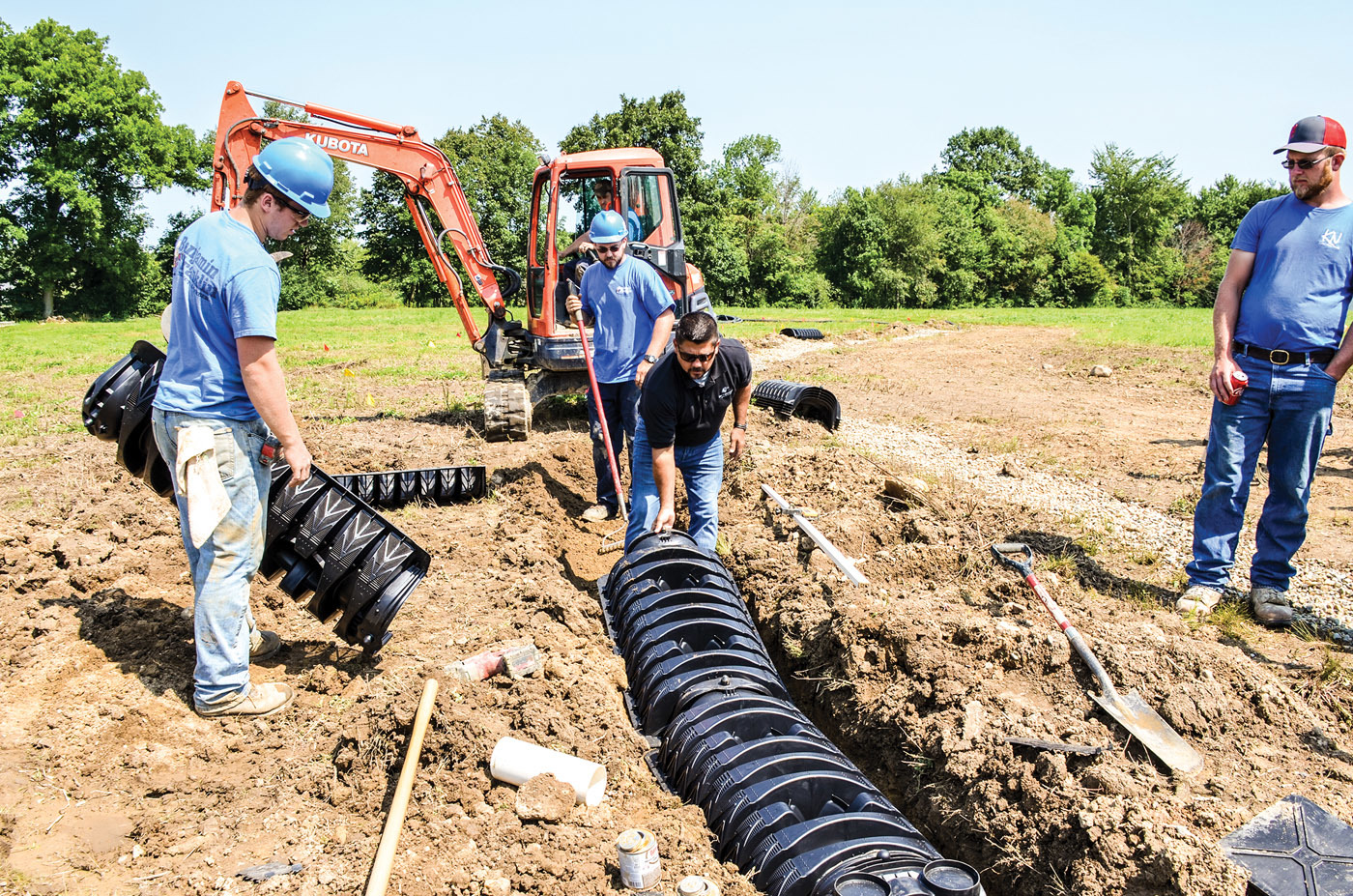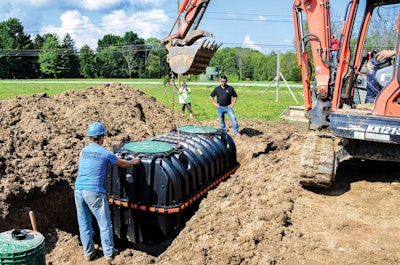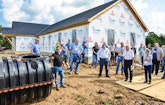
Ron Laurent speaks at the Ohio Onsite Wastewater Association seminar that was part of the Red Tulip Project.
When Ron Laurent heard about the Red Tulip Project and its need for an onsite system, he wanted to get involved. A group of volunteers in Geauga County in northwest Ohio were working hard to build the first area sober house for women fighting opioid addiction, and Laurent felt the onsite industry could pitch in and help make the facility a reality.
“I thought it was a worthy cause because of the opioid epidemic across the country,” Laurent recalls. “I set up a meeting about the project with the Red Tulip board. We got into this conversation, and one thing led to another.”
At the time, Laurent served on the board of directors for the Ohio Onsite Wastewater Association and was about to be named president-elect of the organization. He was also an installing technician for DeBord/Benjamin Franklin Plumbing in Chardon. He felt compelled to rally the forces of the onsite industry to give the project a boost.
So Laurent coordinated donations of 100 percent of the equipment and labor needed to design and install a septic tank effluent pump system with a low-profile pressurized mound for the facility that is bigger than a typical residential dwelling.
The system was built on heavy clay soils with a shallow seasonal high water table, and the designers sized it a little larger than for the typical home (800 gpd) because there may at times be more occupants per bedroom, Laurent explains. It is expected that the average stay for residents will be 60 to 90 days, but they could stay up to two years through the treatment program.
Giving back

Zak Sherman, of Infiltrator Water Technologies, demonstrates installation of Quick4 low-profile chambers. Also pictured are workers from the DeBord/Benjamin Franklin Plumbing installation team.
All told, the value of materials and labor was about $26,000 to $28,000, and Laurent thinks the project reflects well on the giving nature of people working in the onsite industry.
“I had no trouble when I called around and asked people to donate. These were all members of the Ohio onsite industry, and it was heartwarming to have people I’ve known for years — good people — actually put their money where their mouth is,” he says.
Laurent’s then-employer led the way, with DeBord/Benjamin Franklin owners Dennis and Leona Kratochivil supplying four technicians and machinery to install the system. Laurent’s new employer, Jet Inc., supplied a J-800 aeration system, lift station and pump. Infiltrator Water Systems supplied an IM-1080 tank, risers, Quick4 low-profile chambers and components. Cleveland Plumbing supplied D-boxes, plumbing pipe and a control box. Klarich Septics offered a lift pump and panel. And Fincham Soil Investigations performed soil testing and provided the design.
Installation of the system in Chardon last summer provided the basis for an educational demonstration for the onsite industry, with 60-70 members of the Ohio Onsite Wastewater Association — installers, service providers, pumpers and regulators — attending a day of seminars featuring the donors talking about their part of the project, followed by observation of the work being done. Participants received six hours of continuing education credits.
“We’re always looking for hands-on training education. Our members crave that rather than sitting in a classroom,” says Neil McConoughy, Ohio Onsite Wastewater Association president and a regulator for the Cuyahoga County Board of Health. The Ohio Onsite Wastewater Association, with 186 members, wants to get more involved with opportunities to provide community service coupled with field training opportunities.
“The manufacturers and installers stepped up to the plate, and it was a worthy cause. We would definitely try to do more if possible. This was our first project of this type, and it was a learning experience,” McConoughy says.
Positive feedback
Weather was a challenge with the timing of the demonstration day, Laurent explains. It rained a few days before, slowing the prep work, then clear weather came the day before and a few days after, allowing for successful completion of the system. Laurent had hoped to finish the project while all the visitors were on site, but they didn’t get far enough along for that. They laid down plywood around the working areas to protect against soil compaction as the participants got close to the work being done.
Feedback was positive from the attendees as well as the project donors. The installers and company representatives were guests at a Pasta With a Purpose thank-you event celebrating construction of the sober house.
Laurent believes Ohio onsite professionals will carry the donations forward if more requests come for their help.
“We were never approached by any organization that needed that kind of help,” Laurent says. “I was hoping it would encourage other people to join our campaign to help with other problems. There are veterans in need, a whole community in need that could use help from time to time.”
Laurent won’t be involved in any more projects in Ohio, as he recently moved to Mississippi for his new job. He’s just starting to look around the Gulf Coast — he’s living in Bay St. Louis — and wondering how he can continue giving back through his onsite expertise.
“I’ve been in the industry for 35 years, and it was a glorious way to end my association with Ohio,” he says.
Share your story
The Ohio Onsite Wastewater Association partnership with the Red Tulip Project exemplifies the positive impact onsite professionals and industry manufacturers can have on their communities. In this case, they are making a difference in a tremendous battle being waged across the country to halt opioid abuse. But there are many opportunities to put your expertise to work for good — to help the poor through Habitat For Humanity or rebuild infrastructure in fire, flood, hurricane or other disaster relief, for example.
Sharing your time and talents can help the less fortunate, but it will also build the reputation of the onsite industry. The public more and more realizes the important role installers play in promoting a clean environment and protecting health. But when you give back, the public also realizes the industry is populated with great people who are looking out for their neighbors.
I realize the folks in Ohio aren’t the only ones making great contributions. If your state association or your installing company is leading an effort to help others, let me know about it. I’d like to share your story with readers.







